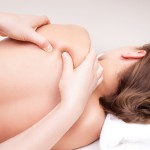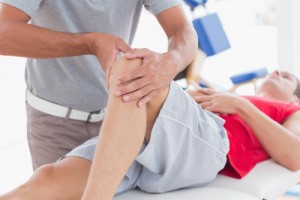
Last month I was fortunate to work with a group of excellent clinicians providing sports medicine services at the 1st European Olympic Games in Baku.
Although we had different background skills as a physiotherapist, sports massage therapist, osteopath, chiropractor or podiatrist, we all agreed on the importance and value of soft tissue work in the management of musculoskeletal (MSK) conditions.
The role and effectiveness of manual techniques, particularly massage, has been the topic of discussion in recent years. This review examined whether massage as a stand alone treatment has benefits for people with common MSK disorders.
Here’s what they did
PubMed, PEDro and CINAHL were searched from inception until October 2014 with no language restrictions. The reviewers included randomised controlled trials studying the effect of massage as a stand-alone intervention (compared to no treatment or to another active intervention) in people aged over 18 years with common musculoskeletal disorders.
Studies were excluded if participants had severe pathology such as fracture, nerve damage, psychological disorders (eg, depression) or sport injuries; if the intervention involved joint manipulation, energy manipulation, or mechanical devices, or if massage was combined with or additional to other active interventions.
The quality of the included studies was assessed using the Cochrane Back Review Group risk of bias tool. The quality of the evidence was assessed using the GRADE approach. The outcomes of interest were pain and function. Data were categorised as short term (post treatment up to 12 weeks) or long term (12 weeks or over).
Here’s what they found
From 1313 titles, only 26 studies were eligible for inclusion. The mean sample size among the studies was 95 participants (ranging from 16 to 579). Fourteen studies recruited fewer than 25 participants per arm and the smallest study arm recruited eight. Participants had a range of MSK disorders including spinal and peripheral conditions, fibromyalgia and chronic pain.
A broad variety of massage techniques, durations and frequencies were used including Swedish massage (n = 5), Thai massage (n = 4), self-massage (n = 1) or a combination of techniques (e.g., therapeutic and structural massage) (n = 12). Where pain was measured using VAS, the authors presented the results as mean differences on a 0 to 100 mm scale. Effect estimates of 16 to 19 mm were considered to be clinically relevant.
Massage versus no treatment control
- There was moderate-level evidence that massage reduces pain compared to no treatment in people with shoulder pain in the short term (pooled mean difference of –16 mm, 95% CI –25 to –7, I2 = 15%) but not in those with low back pain (MD = –12, 95% CI –32 to 8, I2= 81%).
- Low-level evidence that massage reduces pain compared to no treatment in people with osteoarthritis of the knee (pooled estimate of MD –19 (95% CI –28 to –10, I2= 0%) in the short term, but is ineffective compared to no treatment in those with neck pain (single study).
- Moderate-level evidence that massage improves function compared to no treatment in people with low back pain in the short term.
- Low-level evidence that massage improves function compared to no treatment in people with shoulder pain and those with osteoarthritis of the knee in the short term.
Massage versus active treatments
- There was low-level evidence (single study) that acupuncture reduces pain more than massage in people with neck pain.
- Very-low-level evidence (single study) that massage reduces pain more than joint mobilisation in people with low back pain, but that there is no benefit of massage over manipulation or relaxation therapy in those with fibromyalgia, low back pain and musculoskeletal pain.
- Low-level evidence (two single studies) that massage does not improve function more than acupuncture or relaxation in people with low back in the short term; in the long term, relaxation seems superior to massage.
The authors concluded
Massage reduces pain, in the short term, in shoulder pain and osteoarthritis of the knee. Massage improves function, in the short term, in shoulder pain, low back pain and osteoarthritis of the knee.

Massage reduces pain, in the short term, in shoulder pain and osteoarthritis of the knee
The Musculoskeletal Elf’s view
 Low quality studies downgraded due to imprecision, inconsistency or design, and lack of consistent terminology made this review challenging for the authors. Missing information included the type of massage, duration of massage session, and the intensity or grade/depth of pressure, making comparisons difficult.
Low quality studies downgraded due to imprecision, inconsistency or design, and lack of consistent terminology made this review challenging for the authors. Missing information included the type of massage, duration of massage session, and the intensity or grade/depth of pressure, making comparisons difficult.
Although this review has shown that massage as a stand alone treatment can improve pain and function, further well designed studies are required. The exact mechanism of how massage works – biomechanical changes, therapeutic touch, etc. is still unclear and merits further investigation. Unfortunately, this review excluded studies looking at the effectiveness of massage in sports injury, an area I am particularly interested in.
What do you think?
- Do you use massage regularly – are you surprised by these findings?
- Are you involved in any studies looking at the effectiveness of massage?
- What about the role of massage in sports therapy?
Send us your views on this blog and become part of the ever expanding Musculoskeletal Elf community. Post your comment below, or get in touch via social media (Facebook, Twitter, LinkedIn, Google+).
Links
Bervoets, D.C., Pim A.J., Luijsterburg, P.A.J., Alessie, J.J.N., Buijs, M.J.& Verhagen, A.P. 2015 ‘Massage therapy has short-term benefits for people with commonmusculoskeletal disorders compared to no treatment: a systematic review’ Physiotherapy, Vol 61. pp. 106-116 [PDF]

Does massage (alone) improve pain and function in common musculoskeletal conditions? http://t.co/MfXrbnI0oo
Does massage improve pain and function in common musculoskeletal conditions? http://t.co/mSMloycngP
@MSK_Elf it does for me
Massage for common musculoskeletal issues. http://t.co/2y0Hsd6sWl
MASSAGE HELPS PAIN:
http://t.co/Ub5Ng4mjMk
Thanks for the post. I had expected a more significant improvement between massage and no treatment.
@MSK_Elf Does massage improve pain and function in common musculoskeletal conditions? http://t.co/ct5Hqxoy4e
Does massage improve pain and function in common musculoskeletal conditions? http://t.co/ct5Hqx6XcG @ACPSEMscotland @physiosinsport
Does massage improve pain and function in common musculoskeletal conditions? http://t.co/ct5Hqx6XcG @SportsMassUK @WeAHPs @Physiotalk
Does massage improve pain and function in common musculoskeletal conditions? https://t.co/F3kRUC1pmf via @sharethis
Massage and MSK conditions, is it effective? http://t.co/mSMloycngP @PhysioCan @CochraneMSK
I have been qualified 31 years now and the debate over massage has swung back and forth over those years. I rarely use massage, though we spent hours and hours learning it back at Leeds School of Physiotherapy in the early 1980’s.
There is no doubt it feels nice and, if delivered correctly, eases pain….in the short term. The limited evidence mentioned above matches the fairly obvious clinical experience. I think if you work in sport, then it has a place. It gets people training and playing and doing their therapeutic exercise. It is psychologically good, generally, in this group.
However, in the general population I have great reservations. Treatment dependency and passive treatment expectation are serious problems in my view. Take LBP; STarTBack has strong evidence to show that over treating people, in fact treating more than once, is potentialy harmful in terms of producing chronic pain in the low psychosocial risk group. In the medium risk group, massage may have a place but it is far more important that patients are able to manage their condition and have self-efficacy than it is to rub them in a theraputic manner. In the high risk group repeated massage in my view is probably going to re-enforce all the inappropriate behaviours that can be found in this group.
I suppose like anything, you have to employ clinical reasoning and judgement before deploying a treatment but I have to say I rarely can make a clinical case for massaging someone. I occasionally do it to get the exercise sceptic on board; a means of establishing a rapport between me and the patient and that’s about it. It has short term effects and potential psychological harms. It has great potential to give out the wrong messages for me.
Ridiculous comments Andrew Grainger. How can it give the wrong message!! Maybe it’s the wrong sort of massage you have been providing. As a massage clinician and now a
Post grad podiatrist massage in the right circumstances can bring pain free symptoms within 24/48 hours where other interventions have failed for my clients. I’m not talking about skin polishing but deep tissue stuff that gets in there to soften tissue and produces an acute inflammatory response to aid healing.
I was not going to reply to this reply to my post but in the end I decided to share something a colleague sent me yesterday. Reference; BJSM Online. http://bjsm.bmj.com. Published July 8th 2015. ‘Stabbed in the back: catalysts for a paradigm shift in back pain care.’ I quote ” While we need pioneers within research and clinical practice to drive the future for MSK care, there is certainly no shortage of self proclaimed experts attempting to fill these roles. Unfortunately, their willing ness to create hypotheses is greater than their willingness to to scientifically test these”. “We need to battle the perception of quick fixes and magic bullets.” I would recommend a read of this article by Jorgen Jevne when considering massage ‘as a stand alone treatment’ as the hypothesis above stated. I don’t just think that this thinking applies to backs incidentally. I am not saying massage is a complete waste of time. I just think it’s long overdue that we test our theories and treatments before they appear, or come and go on the treatment fashion merry-go-round, as massage has done over the years. I can recall a time when there was actually discussion as to it being removed from the core of Physio practice.
I think it can have a place specifically to facilitate active exercises. There is not really a place for it as a stand alone. We need to move away from the passive treatments ” healer” mentality and get the patients on board with active involvement. I agree totally with u Andrew.
Does massage improve pain & function in common musculoskeletal conditions?http://t.co/JJS4fI8wAF Join the discussion on our website now!
Thank you for the above review. Within the podiatric context I’m involved in manual therapy rehab approaches…..anecdotally I have found specific soft tissue mobilisation (Hunter 1998) to be an extremely useful adjunct in aiding tissues to again tolerate loading forces. Offered in good faith.
Though I would add it forms part, sometimes a significant part, of a care pathway.
My question is, if FUNCTION were to be improved, does that mean PAIN has decreased as well? @SportsMassUK @WeAHPs @Physiotalk @MSK_Elf @ACPSEMscotland @physiosinsport @AndrewGrainger
My posture isn’t great, and I hope massage will help me. Which type of massage therapy helps with muscle cramps or pain, if any?